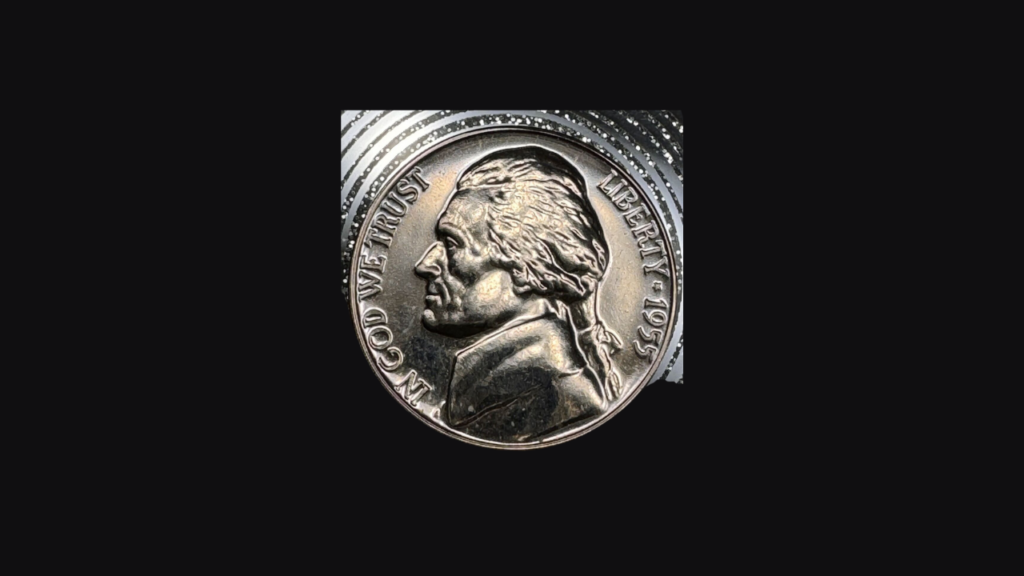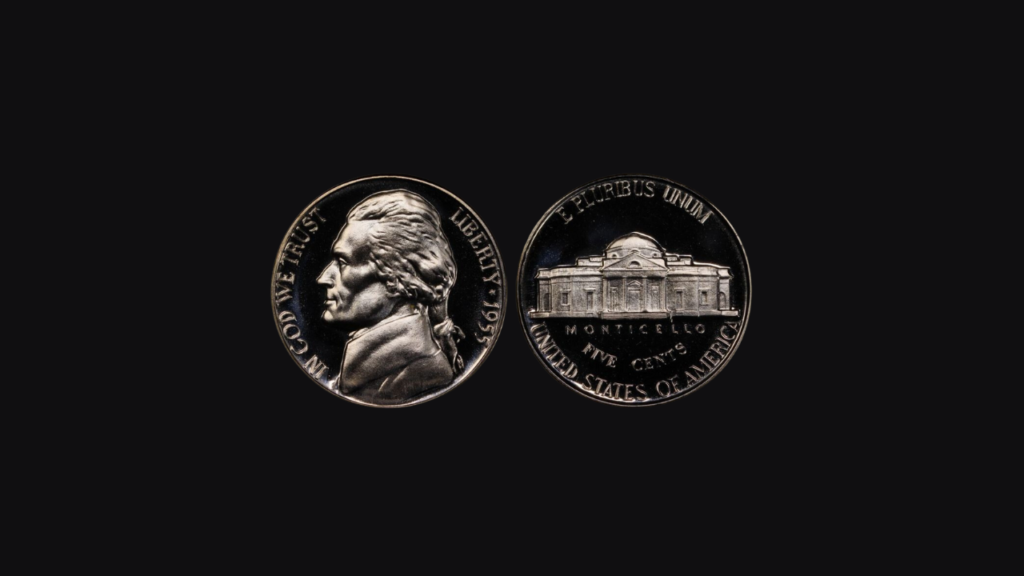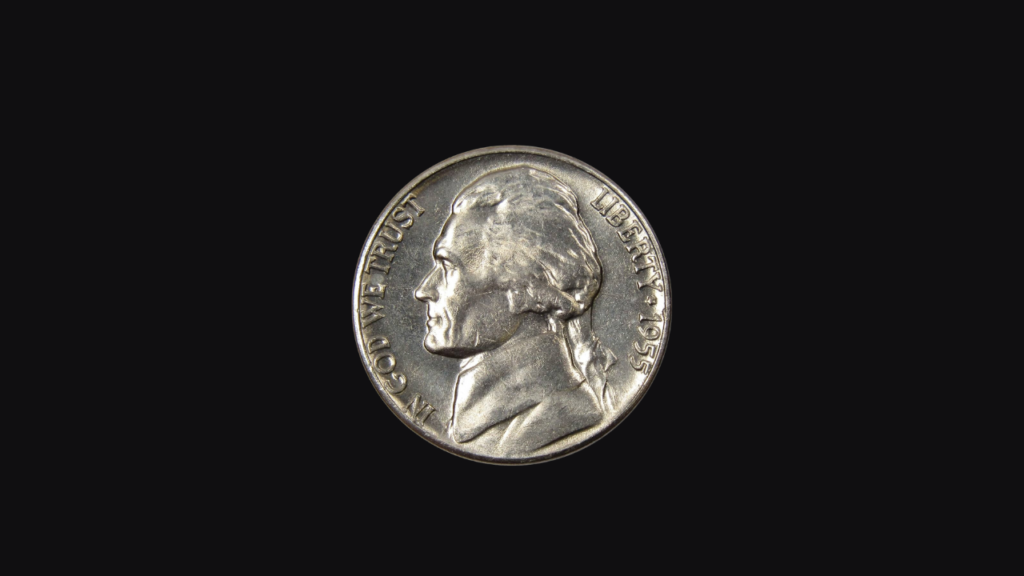The 1955 Jefferson nickel is more than just a 5-cent coin; for collectors, it holds significant historical and monetary value. While its face value is low, some varieties and well-preserved coins can fetch high prices among enthusiasts.
A Look at the Coin’s Composition
The 1955 Jefferson nickel is made up of 75% copper and 25% nickel, weighing 5 grams with a smooth edge and a diameter of 21.21 millimeters.
Its design is iconic, showcasing Thomas Jefferson’s profile on the front (obverse) and his Monticello estate on the back (reverse).
Inscriptions on the coin include:
Front (Obverse):
- IN GOD WE TRUST
- LIBERTY
- The year 1955
Back (Reverse):
- E PLURIBUS UNUM (Latin for “Out of Many, One”)
- MONTICELLO
- UNITED STATES OF AMERICA
- FIVE CENTS
Why the 1955 Jefferson Nickel Stands Out?
The Jefferson nickel design, introduced in 1938, replaced the Buffalo nickel, which was difficult to produce due to its fragile die. Designed by Felix Schlag, the original Jefferson design lasted until 2004, making it a staple in U.S. currency history.
Key Varieties of the 1955 Jefferson Nickel
There are three main varieties of the 1955 Jefferson nickel:
1955-P Nickel (Philadelphia Mint)

- Mintage: 7,888,000 (one of the lowest production runs for nickels)
- Mint Mark: None
- Value: $0.05 to $60 or more, depending on condition
- Details: Often poorly struck, making high-grade coins like MS66 rare and valuable.
1955-P Proof Nickel

- Mintage: 378,200
- Mint Mark: None
- Value: $7 to $72, with some fetching over $900 for pristine “deep cameo” grades.
- Details: Made for collectors, these coins have a polished finish and are preserved in special packaging.
1955-D Nickel (Denver Mint)

- Mintage: 74,464,100
- Mint Mark: “D” (on the reverse, near Monticello)
- Value: $0.05 to $13 or more. Coins graded MS65 or higher can be worth over $100.
- Details: Generally better struck than the Philadelphia nickels, making them more appealing to collectors.
Why the 1935-S Peace Dollar is a Collector’s Dream?
Rare Errors and Unique Features
The 1955 Jefferson nickel also includes some error varieties that are highly sought after, such as:
- D Over S Mint Mark: A rare error caused by repurposed dies from the San Francisco Mint, resulting in a faint “S” under the “D” mint mark.
- Planchet Errors: Coins with clipped edges or folded metal.
- Strike Errors: Includes weak strikes or double strikes.
These errors can significantly increase the coin’s value among collectors.
How Much Are 1955 Jefferson Nickels Worth?
The value of a 1955 Jefferson nickel varies depending on its condition, rarity, and unique features. Below is a quick reference:
| Type | Condition | Value Range |
|---|---|---|
| 1955-P Circulated | $0.05 – $0.10 | |
| 1955-P Uncirculated (MS64+) | $7 – $60+ | |
| 1955-P Proof (PR69) | $91 – $280+ | |
| 1955-D Circulated | $0.05 – $0.10 | |
| 1955-D Uncirculated (MS66) | $25 – $129+ |
High-grade examples or coins with “Full Steps” (a term used for sharply detailed coins) can sell for thousands. For instance, in 2007, a 1955 nickel with a Full Steps grade sold for $12,650.
Where to Buy or Sell 1955 Jefferson Nickels?
If you’re looking to buy or sell a 1955 Jefferson nickel, here are your options:
- Online Marketplaces: Websites like eBay, Amazon, and Etsy are popular for coin trading.
- Specialized Coin Websites: Platforms such as CoinTrackers and USA Coin Book focus on U.S. coins.
- Local Shops and Auctions: Antique stores, coin shops, and pawnshops often deal with collectible coins.
Rare Coin or Bill? 4 Mistakes That Could Cost You Thousands!
Final Thoughts
The 1955 Jefferson nickel is a fascinating piece of U.S. history and an exciting addition to any coin collection. Its low mintage, unique varieties, and occasional errors make it a valuable find for collectors. Whether you’re a seasoned numismatist or just starting, the 1955 Jefferson nickel is worth exploring.
Editorial Note: This article was created through automated technology, with all details verified and polished by our editorial expert.

